Table of Contents
- Fleischner Criteria
- Basic differential for lung parenchymal findings
- Expanded differential for ground glass opacities
- Pulmonary CT signs differential
- Thoracic lymph node stations
- Pulmonary arterial anatomy
- PE classification
- Normal aortic measurements
- Acute aortic syndrome
- Aortic dissection classification
- Traumatic aortic injury
- Endoleaks
Fleischner Criteria (2017)
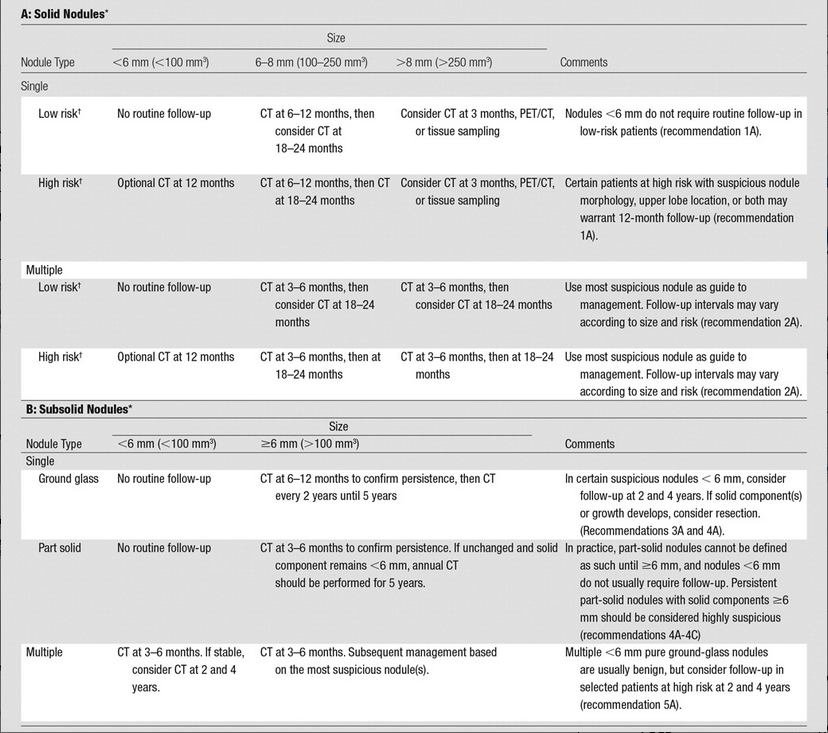
Basic Differential for Lung Parenchymal Findings

Expanded Differential for Ground Glass Opacities

Pulmonary CT Signs and Differential
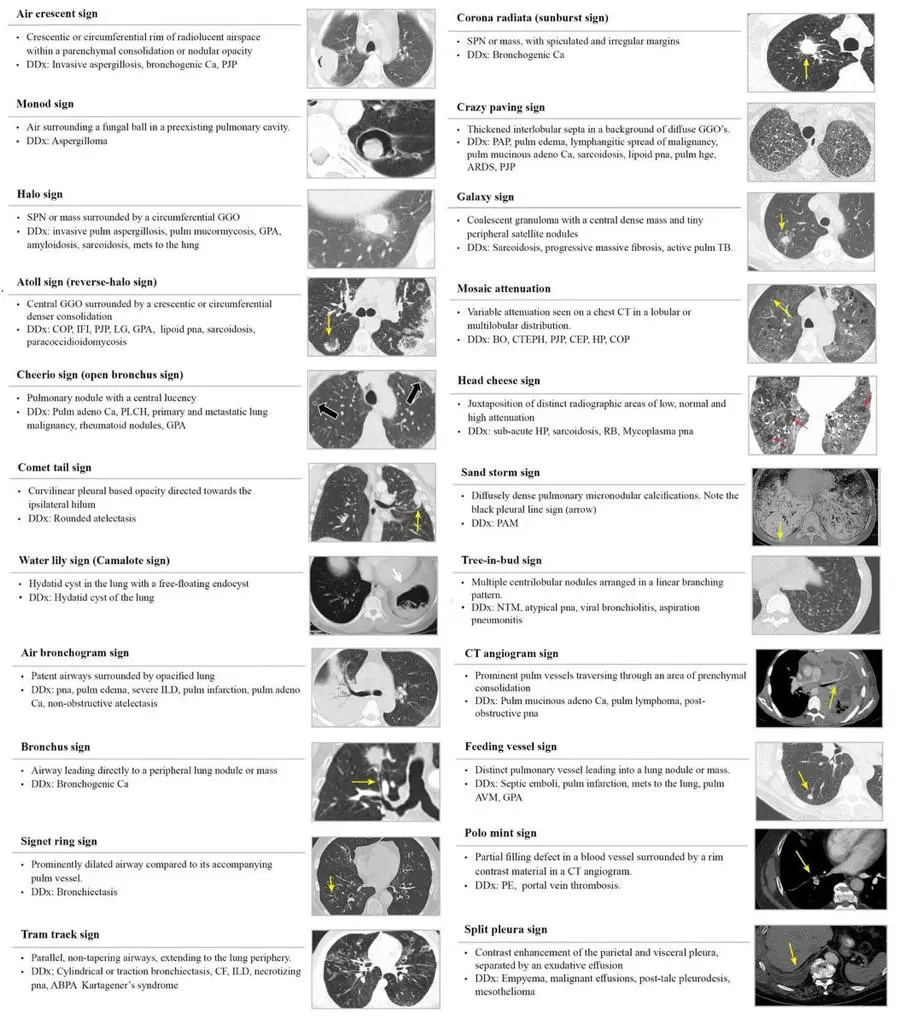
Lymph Node Stations
Annotated CT
General Pulmonary Arterial Anatomy
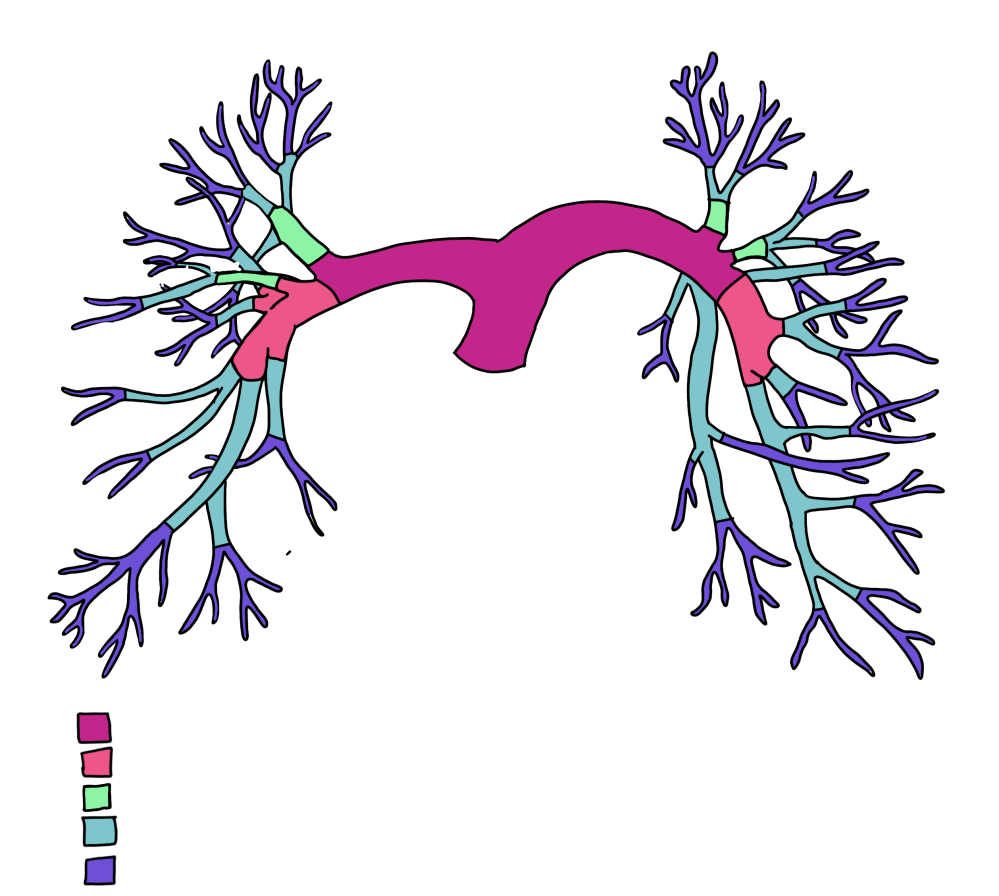
PE Classification
| Category | Criteria | Mortality Rate |
|---|---|---|
| Massive | Acute PE with sustained hypotension (< 90mmHg systolic) for >15 minutes OR requiring inotropic support | 25-65% |
| Submassive | Systolic >90mmHg with either findings of right heart strain (CT, ECG, BNP) or elevated troponins | 3% |
| Low risk | None of the above | <1% |
Normal Aortic Measurements

Acute Aortic Syndrome
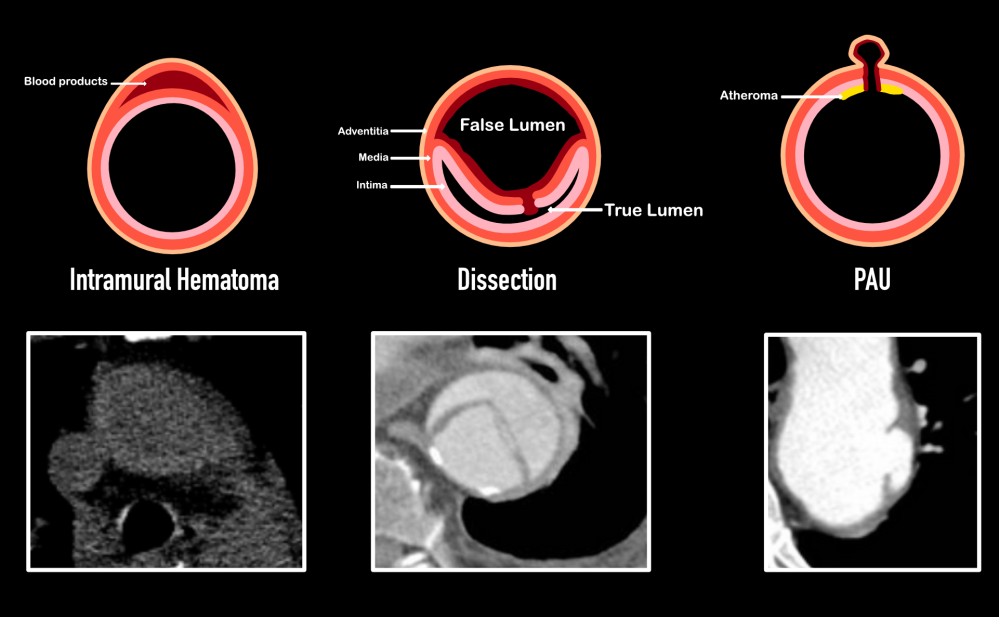
Intramural Hematoma

Reporting Checklist
- Stanford Classification
- Maximum aortic diameter (generally >5cm = surgery)
- Maximal hematoma thickness (generally >11mm = surgery)
- Presence of intramural blood pool or ulcer like projections
- Ulcer like projection diameter and depth
- Presence of
- Pleural effusion
- Pericardial effusion
- Periaortic hematoma

Aortic Dissection

Reporting Checklist
- Diagnosis
- Standard dissection
- Incomplete dissection
- Distribution
- Entry and exit tear sites
- Branch vessel origins from the true/false lumen
- If type B and endograft may be attempted:
- Size of the vertebral arteries
- Distance from the left subclavian to the entry tear
- Distance from the left common carotid to the left subclavian
- Complications
- Rupture
- Shared sheath rupture
- Hemopericardium
- Aortic insufficiency
- Intimointimal intussusception
- Coronary involvement
- Signs of organ ischemia
- Rupture
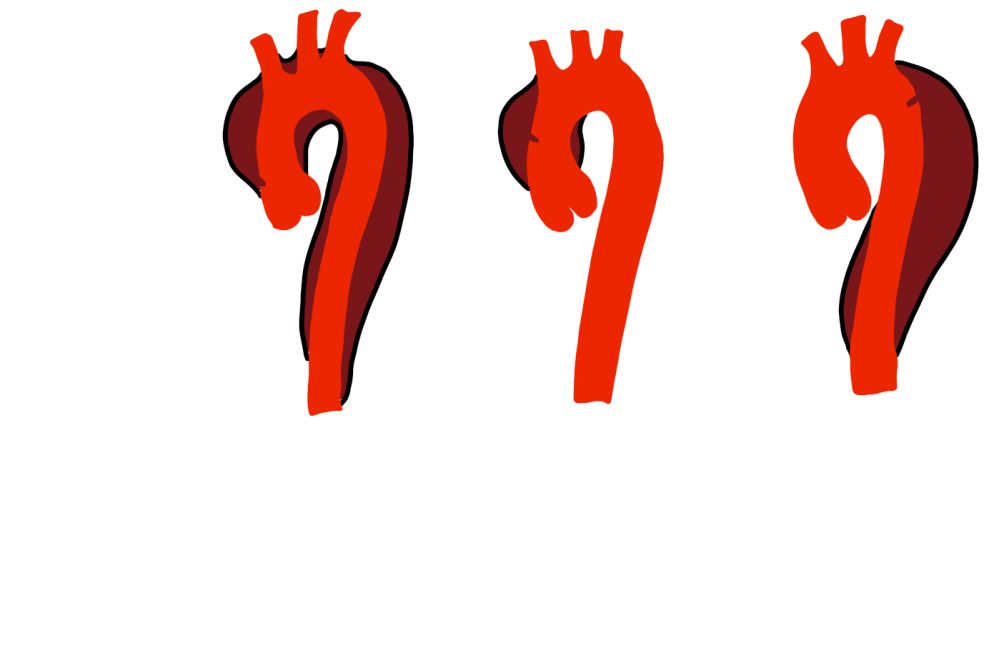
Traumatic Aortic Injury
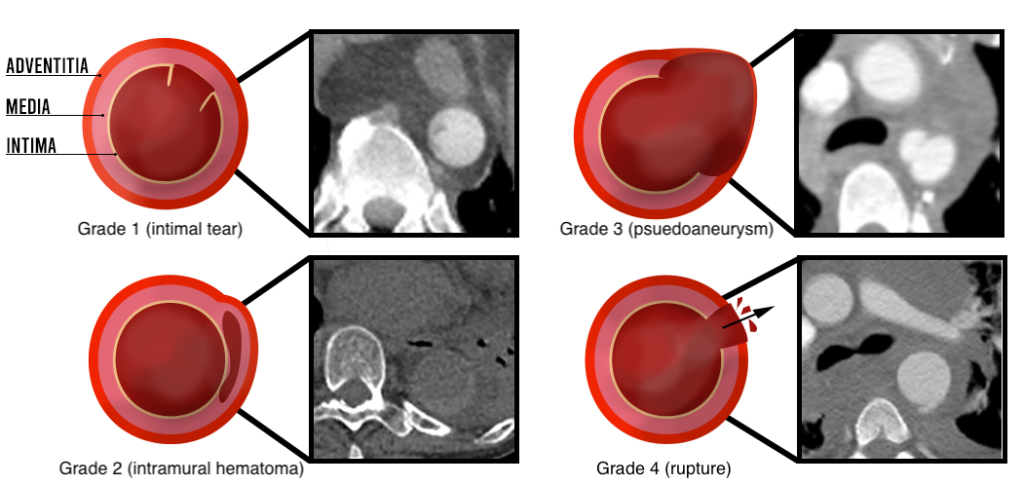
Endoleaks
